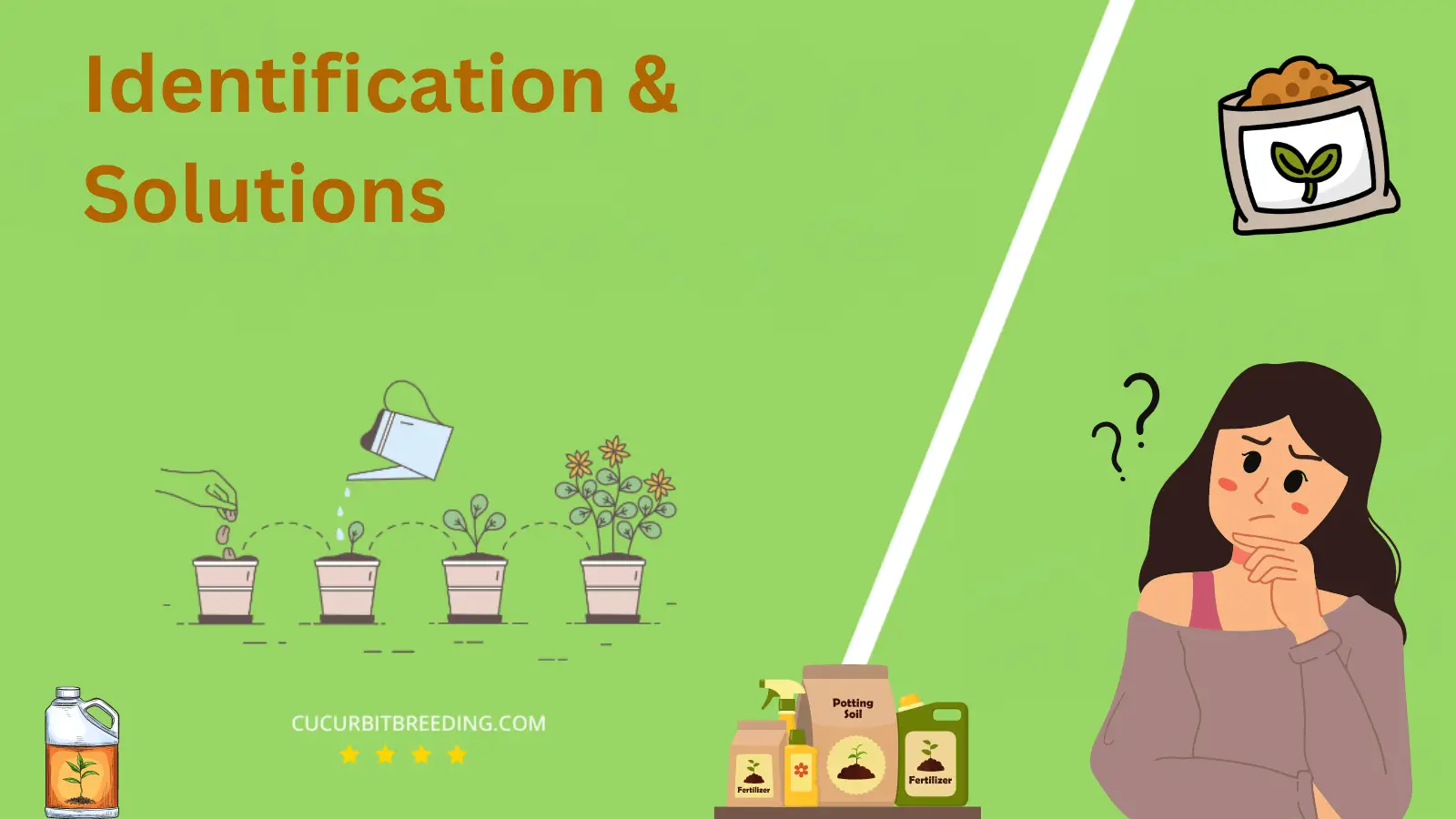
Have you ever noticed that your favorite cauliflower turn brown, leaving you confused and disappointed? Although this vegetable’s pristine white aesthetic is its signature appeal, it can sometimes play hide and seek, transitioning into an unexpected hue.
While disheartening, this issue calls for investigation rather than defeat. Let’s venture on a journey to explore the underlying reasons for this conundrum, discovering not only why this happens but also, importantly, how you can prevent it.
Why Do Cauliflower Turn Brown And How Can It Be Prevented?
Cauliflower can turn brown due to several reasons. One of the most common causes is oxidation which comes as a result of exposure to air during storage, causing the cauliflower to brown over time. Another factor can be a condition called downy mildew, a type of plant disease that may cause spots on the cauliflower heads which then become brown. Weather conditions, especially dramatic changes in temperature and humidity, can also be a factor for the browning issue.
1. Oxidation
| Description | When exposed to air, the cells in the leaf undergo oxidation, causing it to turn brown. |
|---|---|
| Solution | Water cauliflower regularly to prevent browning. |
Oxidation is the primary reason why cauliflower turns brown, and it can significantly affect the plant’s appearance and quality. When cauliflower is exposed to air, the enzymes present in the vegetable react with oxygen, resulting in a chemical reaction called oxidation. This reaction leads to the formation of brown pigments, causing discoloration on the surface of the cauliflower.
To prevent cauliflower from turning brown, there are several solutions that can be implemented. One effective method is to minimize the cauliflower’s exposure to air by storing it in an airtight container or tightly wrapping it in plastic wrap. This reduces the amount of oxygen available for the oxidation process to occur. Additionally, keeping cauliflower in the refrigerator at a temperature between 32°F and 36°F (0°C and 2°C) can slow down the enzymatic reactions responsible for browning.
Another preventive measure is to treat the cauliflower with an acid solution, such as lemon juice or vinegar, before cooking or storing. Acidic substances help maintain the cauliflower’s color by inhibiting the enzymes involved in oxidation. Simply applying a small amount of lemon juice or vinegar onto the cauliflower can effectively prevent browning.
Furthermore, blanching the cauliflower before cooking or freezing can also help prevent browning. Blanching involves briefly immersing the cauliflower in boiling water, followed by immediate cooling in ice water. This process deactivates the enzymes responsible for browning and helps retain the vegetable’s natural color.
In conclusion, oxidation is the main reason why cauliflower turns brown, affecting its appearance and quality. To prevent browning, it is crucial to reduce the cauliflower’s exposure to air, store it properly, and treat it with acidic substances. Blanching the cauliflower can also be an effective measure to prevent browning. By implementing these preventive measures, the browning of cauliflower can be minimized, ensuring a visually appealing and fresh vegetable.
2. Enzymatic browning
| Description | Lack of water disrupts the flow of nutrients, causing the leaf to turn brown. |
|---|---|
| Solution | Use lemon juice to prevent enzymatic browning in cauliflower by applying it immediately after cutting. |
Enzymatic browning is a chemical reaction that occurs when certain enzymes in cauliflower react with oxygen in the air, resulting in the development of a brown color. This browning process can negatively affect the appearance, taste, and overall quality of cauliflower.
To prevent enzymatic browning in cauliflower, several solutions can be implemented. One effective method is to minimize the exposure of the cauliflower to oxygen by storing it in an airtight container or wrapping it tightly in plastic wrap. This helps create a barrier between the cauliflower and the air, thereby reducing the chances of enzymatic browning. Additionally, it is important to handle cauliflower gently to avoid damaging the cells and releasing the enzymes that contribute to browning. Cutting or chopping the cauliflower just before use can also help minimize the browning reaction.
Another preventative measure is to use acidulated water, which is water mixed with a small amount of lemon juice or vinegar. Immersing the cauliflower in this solution for a few minutes before cooking or storing can help inhibit enzymatic browning. The acidic nature of the solution slows down the enzymatic reaction, preserving the cauliflower’s color.
Lastly, blanching the cauliflower before freezing or preserving can prevent enzymatic browning. Blanching involves briefly immersing the cauliflower in boiling water, then quickly cooling it in ice water. This process inactivates the enzymes responsible for browning, allowing the cauliflower to retain its natural color for a longer period. By implementing these preventative measures, the occurrence of enzymatic browning in cauliflower can be significantly reduced, resulting in visually appealing and delicious dishes.
3. Exposure to air
| Description | causes the leaf to turn brown due to oxidation of plant pigments. |
|---|---|
| Solution | Cover cut surface with lemon juice or vinegar to prevent oxidation and browning. |
The reason why cauliflower turns brown is due to exposure to air. When the cut surface of cauliflower is exposed to air, it undergoes a process called oxidation. This oxidation reaction causes the cauliflower to turn brown, similar to how an apple turns brown when it is cut and left exposed to air.
This problem affects the appearance and quality of the cauliflower, as brown discoloration makes it less visually appealing and may indicate a loss of freshness. Additionally, oxidized cauliflower may have a slightly bitter taste.
To prevent cauliflower from turning brown, it is important to minimize its exposure to air. One effective solution is to store cauliflower in an airtight container or wrap it tightly in plastic wrap. This creates a barrier between the cut surface and the air, reducing oxidation. Another solution is to immerse the cut cauliflower in water or lemon juice, as the acidity in lemon juice can help slow down the browning process. Finally, consuming the cauliflower shortly after cutting or cooking it can also help prevent browning.
4. Aging
| Description | causes the leaf to turn brown due to oxidation of plant pigments. |
|---|---|
| Solution | Cover cut surface with lemon juice or vinegar to prevent oxidation and browning. |
The reason why cauliflower turns brown is due to aging. As cauliflower ages, it undergoes a natural process called oxidation, which causes it to turn brown. This can be visually unappealing and affect the overall quality of the plant.
To prevent cauliflower from turning brown, there are a few solutions that can be implemented. First, it is important to select fresh cauliflower when purchasing it. Look for cauliflower heads that have a creamy white color and firm texture. Avoid cauliflower with any brown spots or discoloration, as these are signs of aging.
Another solution is to properly store cauliflower. Keeping it in a cool and dry place, such as the refrigerator, can help slow down the aging process. Wrapping the cauliflower in a plastic bag or storing it in an airtight container can also help maintain its freshness and prevent browning.
Lastly, it is essential to cook cauliflower properly to minimize browning. Overcooking can accelerate the oxidation process and result in a brownish color. To prevent this, it is recommended to blanch or steam cauliflower until it is tender but still maintains its crispness. Avoid boiling cauliflower for extended periods of time.
In summary, the browning of cauliflower is caused by aging, and it can be prevented by selecting fresh cauliflower, storing it properly, and cooking it appropriately. By following these solutions, you can maintain the visual appeal and quality of cauliflower.

5. Heat
| Description | Cover cut surface with lemon juice or vinegar to prevent oxidation and browning. |
|---|---|
| Solution | Blanch cauliflower in boiling water for 2-3 minutes to prevent it from turning brown. |
The reason why cauliflower turns brown is due to exposure to heat. When cauliflower is exposed to high temperatures, enzymatic browning occurs, leading to the formation of brown pigments. This heat-induced browning can affect the appearance, texture, and flavor of the cauliflower, making it less appetizing for consumers.
To prevent cauliflower from turning brown, there are a few solutions that can be implemented. Firstly, it is important to store cauliflower in a cool environment, preferably at temperatures below 50°F (10°C). This will slow down the enzymatic reactions responsible for browning. Additionally, cauliflower should be protected from direct sunlight and stored away from heat sources.
Another preventive measure is to blanch the cauliflower before cooking or freezing it. Blanching involves briefly immersing the cauliflower in boiling water, which inactivates the enzymes responsible for browning. After blanching, the cauliflower can be cooled rapidly by placing it in ice water to halt any residual enzymatic activity.
Furthermore, adding acidic substances like lemon juice or vinegar to the cooking water or the cauliflower itself can help prevent browning. The acid lowers the pH, creating an unfavorable environment for the browning enzymes to function.
By implementing these preventive measures, such as proper storage, blanching, and the addition of acidic substances, the browning of cauliflower can be minimized, preserving its appearance and quality.
6. Bruising
| Description | Causes oxidation of enzymes and release of polyphenols, resulting in brown discoloration of the leaf. |
|---|---|
| Solution | Apply lemon juice to cut surfaces immediately after slicing to prevent oxidation and browning. |
Bruising is a common reason why cauliflower turns brown. When cauliflower is mishandled or subjected to rough handling during transportation or storage, it can lead to bruising. Bruising occurs when the cauliflower’s cells are damaged, causing them to release enzymes that react with oxygen, resulting in the brown discoloration.
To prevent cauliflower from turning brown due to bruising, proper handling and storage techniques should be followed. Firstly, it is crucial to handle cauliflower with care, ensuring gentle placement and avoiding any unnecessary pressure or impact. Secondly, cauliflower should be stored in a cool and dry environment to maintain its freshness and minimize the risk of bruising. It is also recommended to store cauliflower in a perforated plastic bag or a loosely closed container to allow for proper air circulation.
Additionally, it is essential to inspect cauliflower before purchasing or using it. Look for any signs of bruising, discoloration, or soft spots, and avoid selecting those specimens. Proper care and attention during handling and storage, along with careful inspection, will help prevent cauliflower from turning brown due to bruising, ensuring its quality and freshness.
7. Disease/infection
| Description | A disease or infection causes the leaf to turn brown due to physiological changes. |
|---|---|
| Solution | Apply a solution of diluted vinegar (1:3 ratio) to prevent cauliflower from turning brown due to disease/infection. |
The reason why cauliflower turns brown is due to disease or infection. When cauliflower plants are affected by diseases or infections, it can lead to discoloration and browning of the cauliflower heads. This can greatly affect the overall quality and marketability of the plant.
To prevent cauliflower from turning brown, proper disease management is essential. Implementing good agricultural practices such as crop rotation can help reduce the risk of diseases and infections. It is important to avoid planting cauliflower in the same area for consecutive seasons, as this can increase the buildup of pathogens in the soil. Additionally, practicing proper sanitation by removing and destroying any infected plant material can help prevent the spread of diseases. Regular monitoring and early detection of diseases can also aid in taking prompt action, such as applying appropriate fungicides or treatments, to prevent further spread and minimize damage. By implementing these preventive measures, the browning of cauliflower can be minimized, ensuring healthier and more marketable produce.